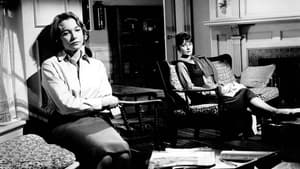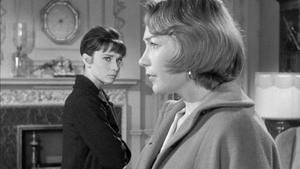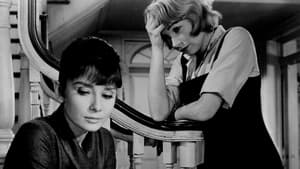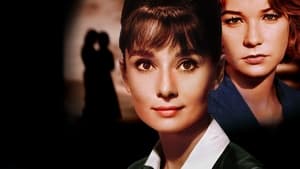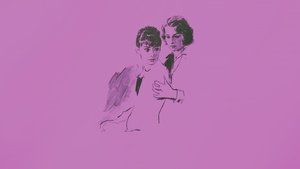Contact: [email protected]
Video Sources 0 Views

The Children’s Hour Colorized 1961: Best Colorful Revival of a 1960s Classic
Synopsis
[ez-toc]




Introduction
In the ever-evolving landscape of cinema, where technology and creativity collide, there exists a delicate balance between preserving the past and breathing new life into it. Old movies, especially those from the black-and-white era, have a timeless quality that transcends the limitations of their original visual palette. The recent colorization of the 1961 classic, The Children’s Hour Colorized, serves as a testament to the power of modern techniques in revitalizing cinematic treasures. In this article, we embark on a journey into the fascinating world of colorized films, with a special focus on the transformation of The Children’s Hour Colorized and its significance in the realm of old movies.
Read Media File Transfer Agreement: Terms and Conditions
Read FAQ
What is Colorization in Films?
Colorization is a process that involves adding color to black-and-white films, a practice that has stirred debates within the film community. While purists argue for the preservation of the original black-and-white aesthetic, others champion colorization as a means to make classic films more accessible and engaging for contemporary audiences. The controversy surrounding colorization often centers on questions of artistic integrity and the impact on the filmmaker’s original vision.
The Children’s Hour Colorized: From Stage to Screen
The Children’s Hour Colorized, a 1961 film directed by William Wyler, is based on Lillian Hellman’s play of the same name. Hellman’s gripping narrative delves into themes of societal expectations, betrayal, and the consequences of rumors. The film boasts an impressive cast, featuring the iconic Audrey Hepburn and the talented Shirley MacLaine in leading roles.
Overview of Lillian Hellman’s Play and Film Adaptation
Lillian Hellman’s play, originally titled The Children’s Hour Colorized, premiered on Broadway in 1934. The story revolves around two female schoolteachers who face dire consequences when a vindictive student spreads false rumors about their relationship. The play’s success prompted a film adaptation, and in 1961, William Wyler took the directorial reins to bring this intense drama to the silver screen.
Key Characters and Casting Choices in the Film
Audrey Hepburn and Shirley MacLaine, both luminaries of their time, were cast in the pivotal roles of Karen Wright and Martha Dobie, respectively. Their performances added depth and emotional resonance to the characters, capturing the audience’s attention with their nuanced portrayals. The chemistry between Hepburn and MacLaine became a highlight of the film, elevating the storytelling to new heights.
A Controversial Narrative: Exploring the Themes of The Children’s Hour Colorized
The Children’s Hour Colorized is notable not only for its stellar cast but also for its daring exploration of controversial themes, particularly homosexuality. In 1961, addressing such issues on screen was groundbreaking, marking a departure from the conservative norms prevalent in the era’s cinema.
Examining the Bold Portrayal of Homosexuality in The Children’s Hour Colorized
The film tackles the repercussions of false accusations regarding the nature of the relationship between the two protagonists. It fearlessly delves into the complexities of social expectations and the devastating consequences of unfounded rumors. Hepburn and MacLaine’s performances added authenticity to the characters’ struggles, making The Children’s Hour Colorized a landmark film in addressing homosexuality with sincerity and depth.
Similarity with Other Films Dealing with Societal Issues
The film’s willingness to confront societal issues resonates with other cinematic works of the time, such as Guess Who’s Coming to Dinner (1967) and To Kill a Mockingbird (1962). These films collectively contributed to a cultural shift in Hollywood, ushering in an era where cinema became a platform for discussions on previously taboo subjects.
The Art of Colorizing Old Movies: Revitalizing Classic Cinema
Understanding the Meticulous Process Behind Colorization
Colorizing old movies is an intricate process that requires careful consideration of the original cinematography and the intended visual atmosphere. For The Children’s Hour Colorized, the task fell upon the shoulders of skilled technicians dedicated to preserving the film’s essence while introducing a vibrant spectrum of colors.
Key Role of Cinematographer in Enhancing Visual Aesthetics
Cinematographer Franz F. Planer’s work on The Children’s Hour Colorized played a crucial role in the film’s visual impact. The colorization process aimed not only to replicate the tones and hues present in the original black-and-white version but also to enhance the overall viewing experience. The collaboration between Planer’s original vision and the modern colorization techniques resulted in a cinematic masterpiece that seamlessly bridges the gap between old and new.
The Colorized World of The Children’s Hour Colorized: Does it Enhance the Viewing Experience?
The decision to colorize a classic film often sparks debates among cinephiles and scholars. Some argue that colorization compromises the filmmaker’s original intent, while others contend that it breathes new life into old movies, making them more accessible to contemporary audiences.
Analyzing the Impact of Color on the Narrative and Atmosphere of The Children’s Hour Colorized
The colorized version of The Children’s Hour offers a fresh perspective on the film’s emotional depth. The lush hues bring out the subtleties in Hepburn and MacLaine’s performances, intensifying the impact of pivotal scenes. The colorization process allows modern viewers to connect with the characters on a more visceral level, highlighting the timelessness of the narrative.
Preserving Film Heritage: Appreciating Both the Original and Colorized Versions
Examining the Debate Between Film Purity and Accessibility Through Colorization
The debate surrounding the colorization of old movies revolves around the tension between preserving the purity of the original film and making it more accessible to new generations. While purists argue for the preservation of the director’s original vision, colorization advocates believe that the process introduces classic films to audiences who might otherwise dismiss them as relics of a bygone era.
In the case of The Children’s Hour, the colorized version offers a compromise, allowing viewers to appreciate the film’s narrative brilliance while experiencing it through a contemporary lens. This approach ensures that the film’s cultural significance remains intact while embracing the evolving tastes of today’s audience.
The Legacy of The Children’s Hour: Relevance and Influence Over Time
Exploring the Film’s Critical Reception and Subsequent Influence on Cinema
The Children’s Hour received critical acclaim upon its original release, with particular praise for Hepburn and MacLaine’s performances. The film’s willingness to tackle taboo subjects contributed to its lasting impact on cinema, paving the way for future films to explore and challenge societal norms.
As we revisit The Children’s Hour in its colorized form, its legacy takes on new dimensions. The film not only remains a cultural touchstone for its time but also becomes a bridge between generations. The colorization process ensures that the film’s relevance endures, inviting a fresh audience to engage with its timeless themes.
Conclusion
In the realm of old films, the colorization of classics like The Children’s Hour sparks important conversations about the intersection of cinematic history and modern technology. Despite the controversies surrounding the practice, the colorized version of The Children’s Hour serves as a testament to the enduring power of storytelling. The film, both in its original and colorized forms, stands as a beacon of cinematic brilliance, captivating audiences across different eras.
Final Thoughts on The Children’s Hour (1961) Colorized Version
As we navigate the delicate balance between preserving film heritage and embracing technological advancements, one thing remains clear – The Children’s Hour, whether in black-and-white or colorized glory, continues to captivate and provoke thought. Its journey from the Broadway stage to the silver screen and now into the realm of colorization exemplifies the resilience and adaptability of classic cinema. In the end, the heart of The Children’s Hour beats on, reminding us that great stories transcend the limitations of time and technology.

